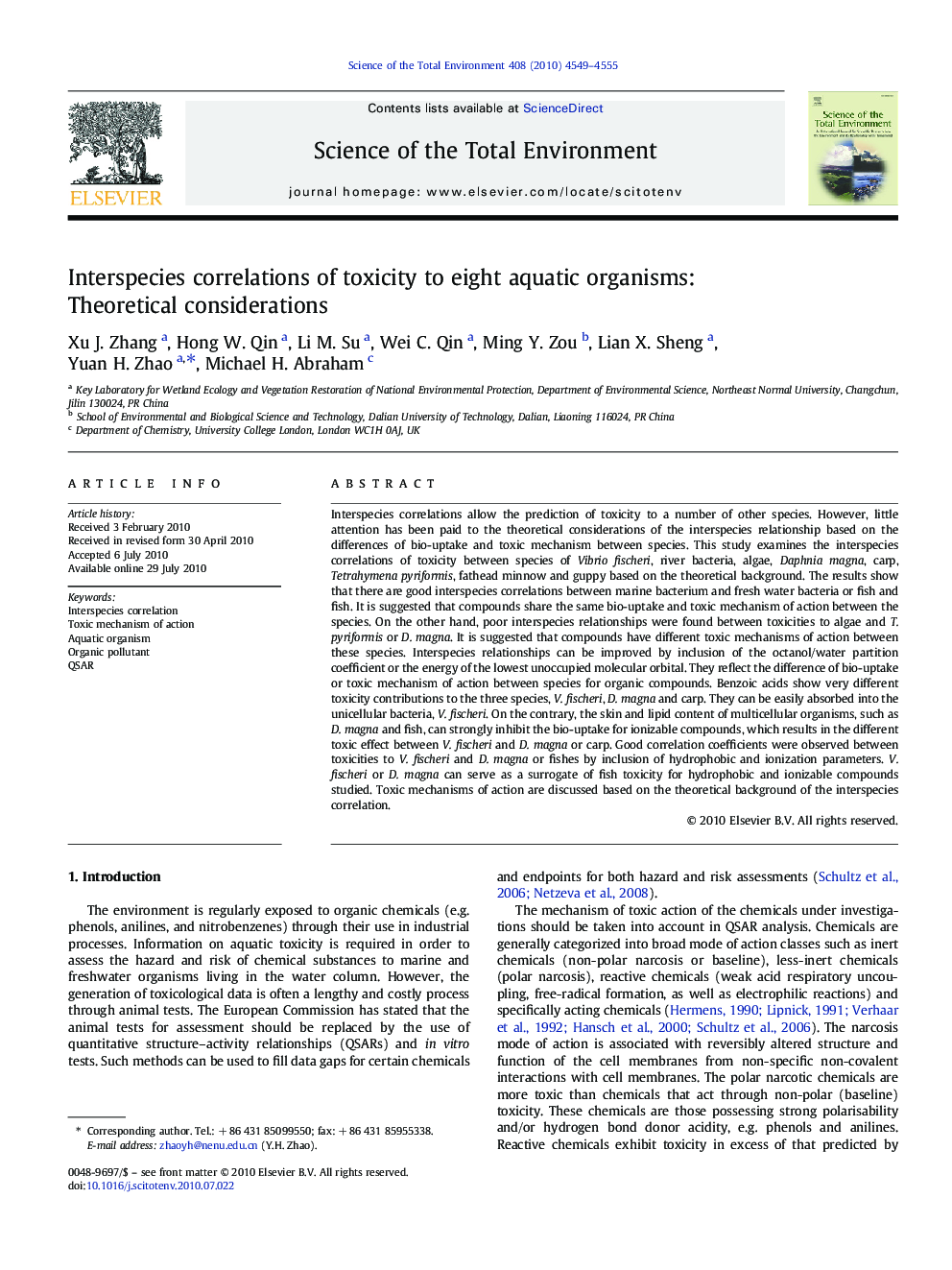| Article ID | Journal | Published Year | Pages | File Type |
|---|---|---|---|---|
| 4430910 | Science of The Total Environment | 2010 | 7 Pages |
Interspecies correlations allow the prediction of toxicity to a number of other species. However, little attention has been paid to the theoretical considerations of the interspecies relationship based on the differences of bio-uptake and toxic mechanism between species. This study examines the interspecies correlations of toxicity between species of Vibrio fischeri, river bacteria, algae, Daphnia magna, carp, Tetrahymena pyriformis, fathead minnow and guppy based on the theoretical background. The results show that there are good interspecies correlations between marine bacterium and fresh water bacteria or fish and fish. It is suggested that compounds share the same bio-uptake and toxic mechanism of action between the species. On the other hand, poor interspecies relationships were found between toxicities to algae and T. pyriformis or D. magna. It is suggested that compounds have different toxic mechanisms of action between these species. Interspecies relationships can be improved by inclusion of the octanol/water partition coefficient or the energy of the lowest unoccupied molecular orbital. They reflect the difference of bio-uptake or toxic mechanism of action between species for organic compounds. Benzoic acids show very different toxicity contributions to the three species, V. fischeri, D. magna and carp. They can be easily absorbed into the unicellular bacteria, V. fischeri. On the contrary, the skin and lipid content of multicellular organisms, such as D. magna and fish, can strongly inhibit the bio-uptake for ionizable compounds, which results in the different toxic effect between V. fischeri and D. magna or carp. Good correlation coefficients were observed between toxicities to V. fischeri and D. magna or fishes by inclusion of hydrophobic and ionization parameters. V. fischeri or D. magna can serve as a surrogate of fish toxicity for hydrophobic and ionizable compounds studied. Toxic mechanisms of action are discussed based on the theoretical background of the interspecies correlation.
